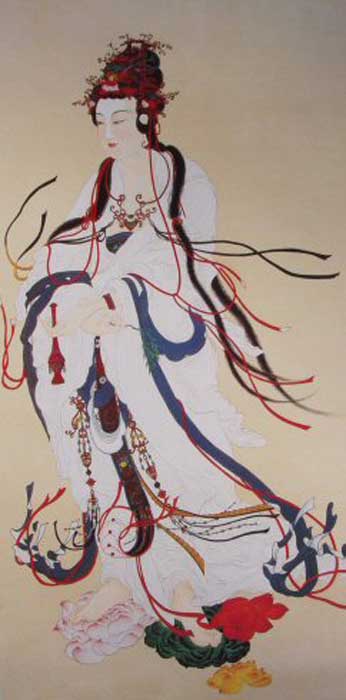
“Homage to Kuan Yin,” the Bodhisattva of Compassion who “Hears the Cries of the World,” painting by H.H. Dorje Chang Buddha III from the book H.H. Dorje Chang Buddha III.
Compassion is symbolized by the Chinese expression “ci-bei” which usually translates as benevolence or mercy. This jewel also has many levels of meaning. At its simplest level, it represents the qualities of kindness and mercy and the desire to help all living beings. It is the second of the “Four Limitless States of Mind” that we cultivate to become a Buddha. Ultimate compassion or bodhichitta is also an expression of true wisdom–it is the ultimate truth of the universe. One practices compassion by helping others achieve enlightenment, but it requires supernormal powers and extraordinary skills, and much wisdom to know how to and be able to truly help others. This is why in Buddhism compassion is often referred to as “skillful means.” Without great insight and wisdom you may actually do more harm than good in attempting to help someone. That is the reason you must first seek enlightenment for yourself in order to be able to teach others. The unenlightened can, however, practice bodhichitta by bringing others to the dharma and helping them learn the dharma.
